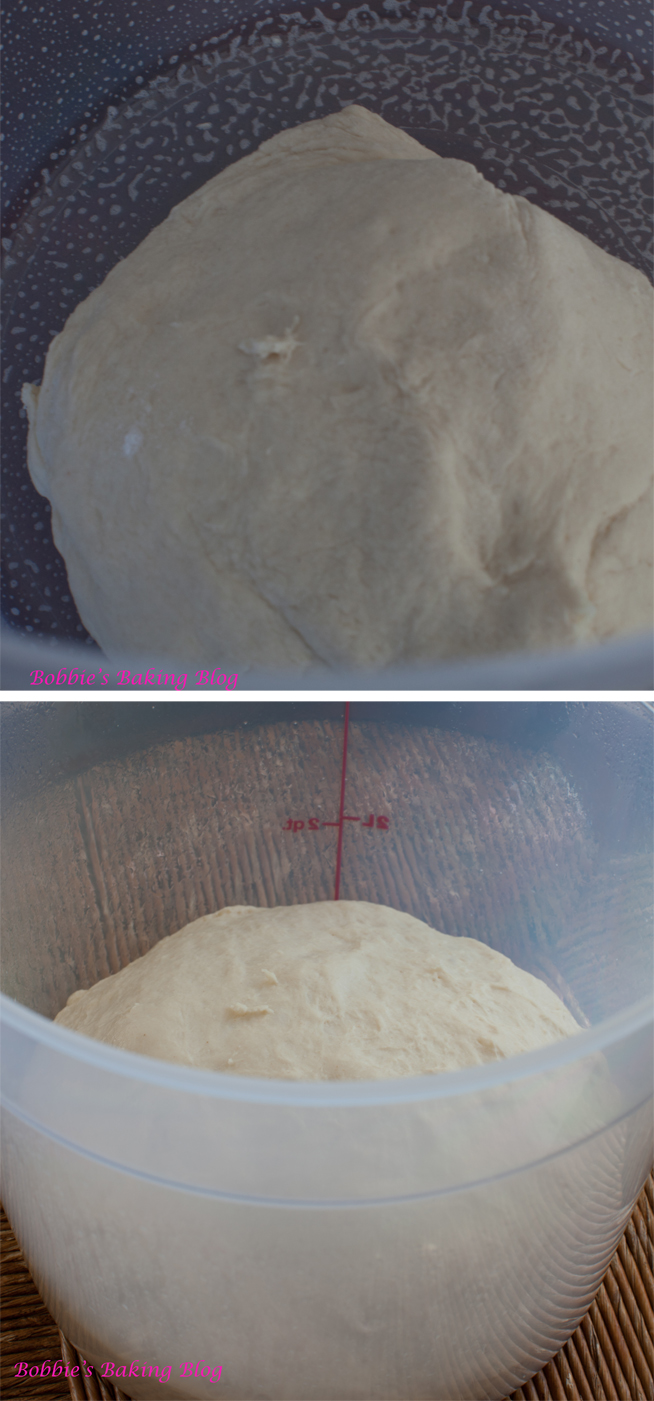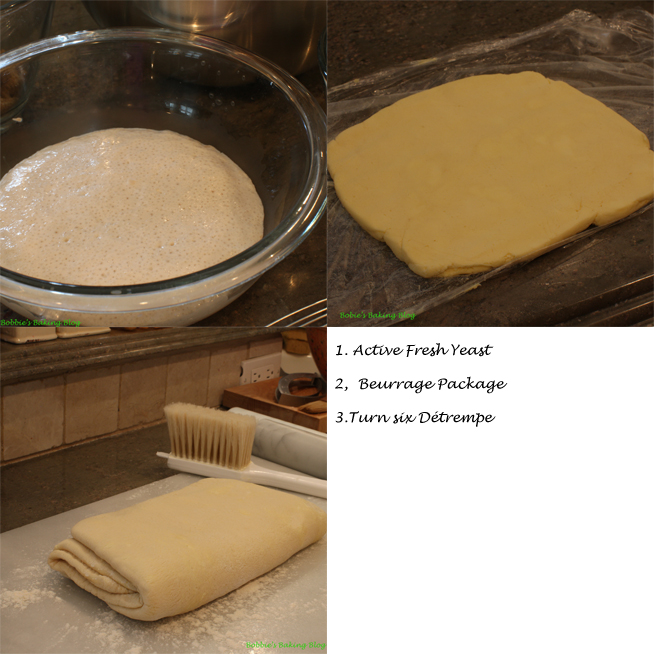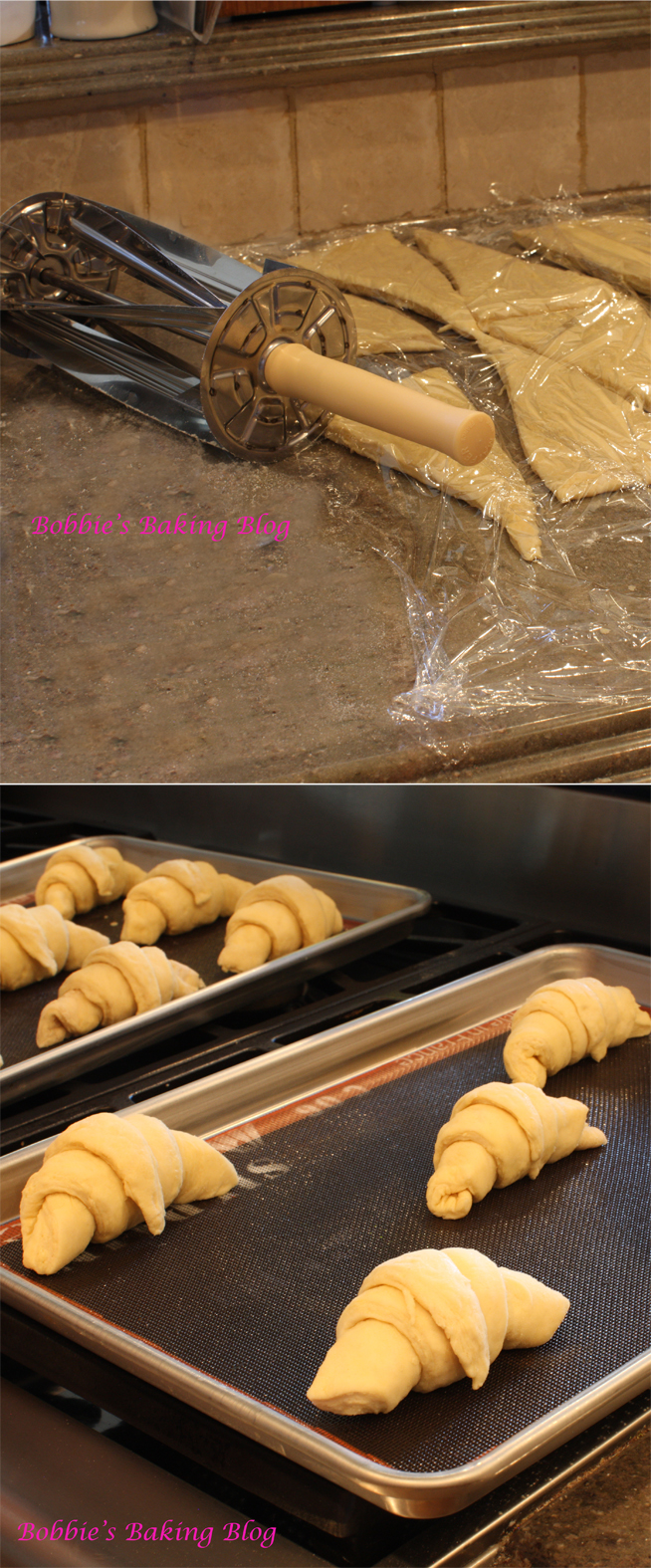Croissants are buttery, flaky, and distinctive; almost everyone is familiar with the croissant as a staple of French cuisine. The croissant brings to mind a flaky, buttery pastry often served with coffee, or perhaps filled with almond, cheese or chocolate for breakfast, snack, or even dessert. It amazed me to find, though their are many theories, creator of the first croissant recipe is unknown. What is known for sure is August Zang, the Austrian artillery officer, founded a Viennese Bakery in Paris in approximately 1839. The famous bakery served Viennese specialties including the Kipferl, quickly became popular and inspired French bakers. Throughout time, the kipfel was developed into what it is known now as the “croissant.” The French version of the Kipferl was named for its crescent (croissant) shape.The concept, if not the term,viennoiserie, a 20th century term for supposedly Vienna-style pastries includes croissants and many other forms of pastries familiar and known around the world.
(Heads up the recipe is perfect for Pains au Chocolat)
My little family unit adore croissants, warm straight from the cooling rack. Though I would relish staying up all night (every night) so they might enjoy warm croissants, this would be me being sarcastic, any busy mother or father wouldn’t keep reading if I was proclaiming to actually do so. It is a treat for Sydney and DF to nosh on a freshly baked croissant. I will admit I bake croissants, from scratch, about every other week, on the day they are freshly baked my family enjoys them warm. Generally Sydney and I are baking them for an order, so it easy to create a few more!
Pâte à Croissant:
14 grams/1.2 ounces or 8 grams dry active yeast
5 grams/ 1-teaspoon sugar
90 grams/ 1 1/8-cupwarm milk
420- 450 grams/ 3½ to 3¾ t-45 flour
40 grams/ 2-Tablespoons sugar/ or brown sugar
7 grams/ 1½-teaspoon salt
244 grams/ 1 cup milk, warm
230 grams/ butter, cold and pliable 65 degrees
Prepare your mise en place.
In a small bowl whisk the flour, if using wheat whisk the wheat with the flour. Cover and set aside.
Détrempe:
If using dry yeast: proof the yeast with the milk, sugar, and yeast. Adding the yeast to the warm milk and then the brown sugar allowing it to sit for about 7 minutes.
If using fresh yeast:
a. Dissolve 1 teaspoon of sugar in 122 gram, 1/2 cup 90°F – 95°F of liquid.
b. Add crumbled Cake Yeast to the sugar solution.
c. Stir yeast until completely dissolved.
d. Let the mixture stand until yeast begins to foam vigorously (5 – 10 minutes).
e. Add mixture to remaining ingredients.
In the bowl of a standing mixer add the yeast mixture, 480 grams of flour (reserving 60 grams if needed), and the brown sugar whisk together, by hand, and then whisk in salt.
Using your dough hook on low speed add the rest of the warm milk until the dry ingredients are moistened. Raise the speed to medium (#4) and amalgamate for about 4 minutes. The dough should be silky, smooth, pulled away from the sides of the bowl, and will still cling to your fingers slightly. The dough must be soft and only slightly elastic. (This will keep the dough easy to roll and keep the butter package from braking through.)
Place the dough in a 4-quart bowl 0r dough bucket that has been lightly greased with cooking spray. Gently press down the dough and lightly spray the top. Cover the bowl or bucket with plastic wrap. Place the dough in a room temperature area for 30 minutes at about 26 degrees C/80 degrees F. If the room is colder put on top of oven that has been preheated to 150 degrees F, make sure to turn off the oven prior to adding the dough.
Using a sprayed rubber spatula, gently fold the dough to deflate it slightly. Cover and place in the refrigerator for at least 3½ hours, but overnight is best.
The Beurrage:
230 grams butter
15 grams/ 1-Tablespoon flour
Cube the butter into dice size pieces. I found the best way to combine the butter with the flour, is to place the cold cube butter and 30 grams of flour in the bowl of your standing mixer on low speed, with the paddle attachment, mix the butter and flour. Once the mixture is amalgamated shape into a 28cm x 28cm 9×9-inche square (no thicker than 3/8 of inch). The butter should still be cool but workable- about 16 degrees C/ 60 degrees F. use it right away, the temperature must be at 16 C/ 60 F to laminate properly.
Pâton:
Laminate the dough:
Take the dough from the refrigerator and roll out to 31 x 31 cm/ 12.5 x 12.5 –inches. Place the beurrage diagonally in the center of détrempe using the back of a knife mark the dough at the corners of the butter, remove the butter at form flaps where the marks are. Now moisten the flaps slightly place the butter back into the center, diagonally. Wrap the butter by securely by overlapping the flaps slightly.
Wrap the pâton in plastic film and allow it to rest in the refrigerator for 30 minutes, but no longer.
Turning the Détrempe:
First turn:place the dough seam side up on a floured marble board. Keep your work surface lightly floured, gently roll the pâton into a long rectangle about 50-cm/20-inches long by 18 cm/ 7inches wide. Brush off the flour from the dough’s surface and give it a business letter fold. Wrap the folded dough in plastic film, lay on a parchment paper lined ½ sheet, and allow to rest in the refrigerator for 40 to 60 minutes. Mark the paper each turn to keep track. (Turns #1, #2, #3, and #4.)
Start with a clean work surface that has been lightly floured. Position the dough so that the spine is facing you’re left (like a book) and press down the edges of the dough with a rolling pin to keep them straight. (The upper part tends to roll out more than the bottom part.) Roll and fold the détrempe the exact same way as the first turn, but turn it over occasionally to keep the seams and edges even. Be sure to roll into all four corners of the détrempe, and use a pastry scraper to even the edges. A total of four turns should be completed.
I find the easiest and most efficient way to complete the four turns is: do the first turn and place the Détrempe, dough butter package, in the refrigerator for about 45 minutes. Once the détrempe is ready to be turned again complete turn two and three turns, place back in the refrigerator for about 45 to 60 minutes. Finally complete the fourth turn and allow to chill for about 2 hours.
Shaping the croissants:
Begin with a cleaned flour workspace.
Roll out the dough to between 50- 60 cm/ 20-24 inches by 19-cm/ 7.5-inches.
Using a croissant cutter (or a pizza cutter) begin to cut, if using a pizza cutter cut a triangle.
Shape one triangle at a time, keeping the remaining triangles covered with plastic wrap.
Using the scraps of dough make about 12 to 14 balls filled with 1-teaspoon of almond pâtissier and keep them covered as well.
Forming the Croissant:
- Cut the triangle
- Unfold the triangle carefully, cut along the fold to separate.
- Gently stretch the triangle twice it’s original length. Gently roll the triangle with a rolling pin from the slit to the point.
- Enclose a piece of scrap dough filled with the almond pâtissier (recipe below).
- With the point facing you roll the dough towards you, gently moving and stretching out to the side.
- Curve the pointed ends of the rolled croissant to form.
To Shape the Croissants Cont.:
Keep the croissant covered with plastic wrap while you shape the rest. Set about 6 to 7 rolled croissants, evenly paced, about 2 inches apart giving them room to grow.
Place the baking sheet of croissants in a warm place to rise, ideally about 26 degrees C/ 80 degrees F for about 2 hours or until the croissants have doubled in size and have achieved a light texture.
Glaze:
50 grams/1 whole egg
14 grams/ 1-tablespoon heavy cream, or half and half
Silvered almond
gentle brush the rolled croissant dough with egg wash and sprinkle with raw silvered almonds.
Baking the Croissants:
Preheat the oven to 218 to 232 degrees C/ 425 t0 450 degrees F, arrange the oven racks so one rack is in the lower and upper positions. Prepare the egg wash and very lightly with a pastry brush, brush the egg wash onto the croissants.
Open the oven, spritz the oven generously with a spray bottle of water and quickly close the door. Open the oven door again, slide the croissant sheets into the oven and re spritz. Turn down the oven temperature to 240 degrees C/ 400 degrees F. after about 10 minutes rotate the croissant sheets. Reduce the oven temperature to 191 degrees C/ 375 degrees F and continue to bake the croissants till deep golden brown, internal temperature is 99 degrees C/ 210 degrees F. (about 8 more minutes). The inside should be slightly doughy, but will finish baking while they cool.
Cooling the Croissant:
Once the croissants have achieved the color and correct internal temperature, remove from the oven and transfer to a cooling rack for about 20 to 30 minutes.
Almond Crème Filling:
adapted from “The Fundamental Techniques of Classic Pastry Arts.”
250 grams butter
250 grams icing sugar
250 gram almond paste
½ teaspoon almond extract
150 grams eggs
25 gram pastry cream powder or cornstartch
300 grams crème pâtissier
25 grams dark rum
In a food processor place the butter give the butter about 15 pulses, add the rest of ingredients, except almond extract and rum and pulse just to combine, DO NOT BEAT. Add the rum and almond extract, pulse to combine. Place in the refrigerator over night, prior to adding to the croissants.
















